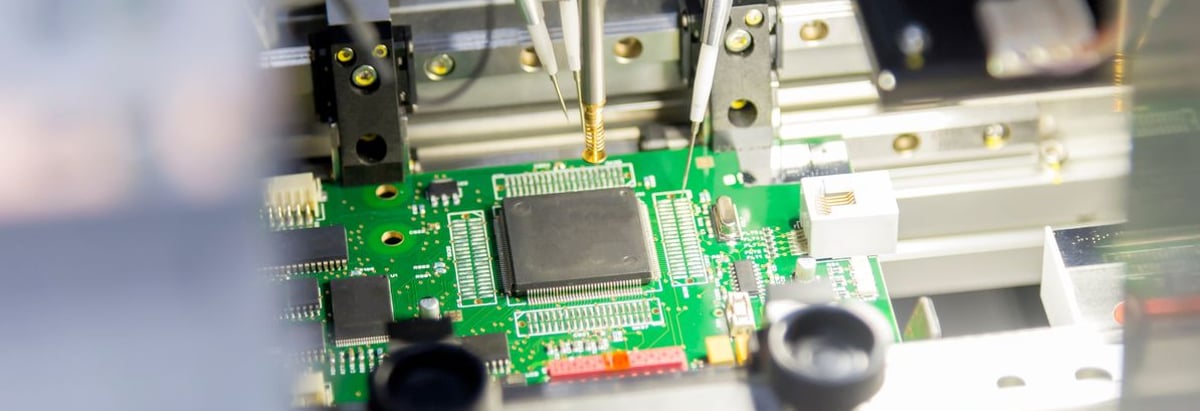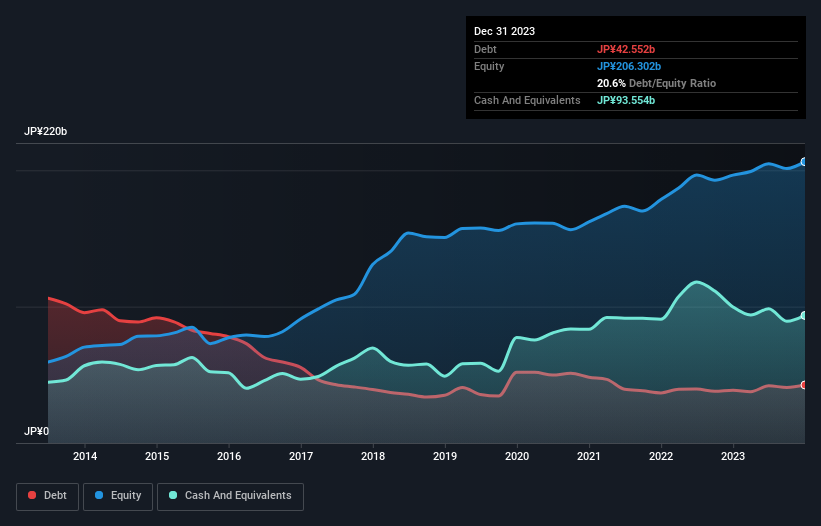
David Iben put it well when he said, 'Volatility is not a risk we care about. What we care about is avoiding the permanent loss of capital.' It's only natural to consider a company's balance sheet when you examine how risky it is, since debt is often involved when a business collapses. Importantly, ULVAC, Inc. (TSE:6728) does carry debt. But should shareholders be worried about its use of debt?
Why Does Debt Bring Risk?
Debt and other liabilities become risky for a business when it cannot easily fulfill those obligations, either with free cash flow or by raising capital at an attractive price. Part and parcel of capitalism is the process of 'creative destruction' where failed businesses are mercilessly liquidated by their bankers. However, a more usual (but still expensive) situation is where a company must dilute shareholders at a cheap share price simply to get debt under control. Of course, the upside of debt is that it often represents cheap capital, especially when it replaces dilution in a company with the ability to reinvest at high rates of return. When we think about a company's use of debt, we first look at cash and debt together.
View our latest analysis for ULVAC
How Much Debt Does ULVAC Carry?
As you can see below, at the end of December 2023, ULVAC had JP¥42.6b of debt, up from JP¥38.8b a year ago. Click the image for more detail. However, it does have JP¥93.6b in cash offsetting this, leading to net cash of JP¥51.0b.

How Strong Is ULVAC's Balance Sheet?
According to the last reported balance sheet, ULVAC had liabilities of JP¥117.8b due within 12 months, and liabilities of JP¥41.6b due beyond 12 months. Offsetting these obligations, it had cash of JP¥93.6b as well as receivables valued at JP¥95.3b due within 12 months. So it actually has JP¥29.5b more liquid assets than total liabilities.
This surplus suggests that ULVAC has a conservative balance sheet, and could probably eliminate its debt without much difficulty. Simply put, the fact that ULVAC has more cash than debt is arguably a good indication that it can manage its debt safely.
The modesty of its debt load may become crucial for ULVAC if management cannot prevent a repeat of the 32% cut to EBIT over the last year. When it comes to paying off debt, falling earnings are no more useful than sugary sodas are for your health. The balance sheet is clearly the area to focus on when you are analysing debt. But it is future earnings, more than anything, that will determine ULVAC's ability to maintain a healthy balance sheet going forward. So if you want to see what the professionals think, you might find this free report on analyst profit forecasts to be interesting.
Finally, a business needs free cash flow to pay off debt; accounting profits just don't cut it. While ULVAC has net cash on its balance sheet, it's still worth taking a look at its ability to convert earnings before interest and tax (EBIT) to free cash flow, to help us understand how quickly it is building (or eroding) that cash balance. Looking at the most recent three years, ULVAC recorded free cash flow of 31% of its EBIT, which is weaker than we'd expect. That weak cash conversion makes it more difficult to handle indebtedness.
Summing Up
While it is always sensible to investigate a company's debt, in this case ULVAC has JP¥51.0b in net cash and a decent-looking balance sheet. So we are not troubled with ULVAC's debt use. The balance sheet is clearly the area to focus on when you are analysing debt. But ultimately, every company can contain risks that exist outside of the balance sheet. To that end, you should be aware of the 1 warning sign we've spotted with ULVAC .
If, after all that, you're more interested in a fast growing company with a rock-solid balance sheet, then check out our list of net cash growth stocks without delay.
New: AI Stock Screener & Alerts
Our new AI Stock Screener scans the market every day to uncover opportunities.
• Dividend Powerhouses (3%+ Yield)
• Undervalued Small Caps with Insider Buying
• High growth Tech and AI Companies
Or build your own from over 50 metrics.
Have feedback on this article? Concerned about the content? Get in touch with us directly. Alternatively, email editorial-team (at) simplywallst.com.
This article by Simply Wall St is general in nature. We provide commentary based on historical data and analyst forecasts only using an unbiased methodology and our articles are not intended to be financial advice. It does not constitute a recommendation to buy or sell any stock, and does not take account of your objectives, or your financial situation. We aim to bring you long-term focused analysis driven by fundamental data. Note that our analysis may not factor in the latest price-sensitive company announcements or qualitative material. Simply Wall St has no position in any stocks mentioned.
About TSE:6728
ULVAC
Engages in vacuum equipment and applications business in Japan and internationally.
Very undervalued with flawless balance sheet.
Similar Companies
Market Insights
Community Narratives



